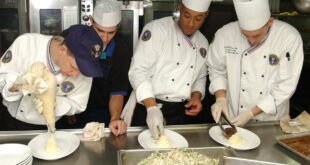The Hearty Legacy of Our Ancestral Foods
The Connection Between Our Ancestral Foods and Culture
Food is one thing that connects and brings people together across cultures. A huge part of a country’s culture is its focus on indigenous and traditional diets. Ancestral foods that have been passed down through generations tell us a story about the culture and history of the community. These foods hold a powerful combination of flavors, traditions, and memories.
History of Ancestral Food
Ancestral foods are often closely related to the history of the culture. In fact, historic diets from different parts of the world are reviewed not because of taste wise or they’ve a special ingredient, but because it is needed to keep ourselves and sustain alive. In many cases, consuming preserved food which had been provide to us by our ancestors is what kept people alive in shortage and difficulties in the history. This rich legacy that helps you to provide needs have now reach up to the modern world for people to acknowledge and gives importance not just in terms of survival but also nutrition wise since it contains essential minerals and vitamins that we need in keeping our bodies health and active.
The Health Benefits of Ancestral Foods
Apart from its cultural and historical significance, ancestral foods continue to hold value in terms of nutrition. Traditional and native foods are highly valued in health awareness even now. Our forefathers planned meals with care, using seasonal available produce to make sure that as much nutrition as possible should be provided in diet.
Ancestral foods of locals are based on local sources, on locally-available food groups; their components are balanced to respect local landscapes and ecosystem in which our historians tried to promote balance between foods and the context of their surroundings.
Integrating Ancestral Foods in Our Daily Meals
While traditional and ancestral foods have taken a back seat in mainstream food cultures, it is only natural to incorporate these foods in our daily diet. Integrating traditional foods, increasing seasonal veggies, fruits, and herbs can build a bond, breaking down emotional and social barriers. It encourages a strong bent, educating people (most especially children) about local diets that preserve history while keeping food diversity alive. Educating children about traditional diets through fun creative cultural thinking related activity for kids is a great effort, learning important materials through interaction with such foodstuffs that play essential parts of the roles. One of the most straightforward ways to integrate ancestral foods in our meals is to aim for diversity at every meal, like rice dishes with beans etc— with nutritional guidance.
Wrapping Up
Our ancestor’s diet enabled us to secure nutrients, live healthily and respectfully with our environments. Thus, when it comes to ancestral foods meaning and importance can effortlessly patch itself to different roots such as cultural, social and nutritional values instead of fading away. Including such foods in our lifestyles, keeps them alive while enhancing historical relevance in our diets. So, let’s bring the food of our ancestors back to life so that it could be used as a physical and intellectual nourishment — an enormous resources these foods that are capable of enchanting our hearts and environmental ethics.
 Mind Uncharted Explore. Discover. Learn.
Mind Uncharted Explore. Discover. Learn.



